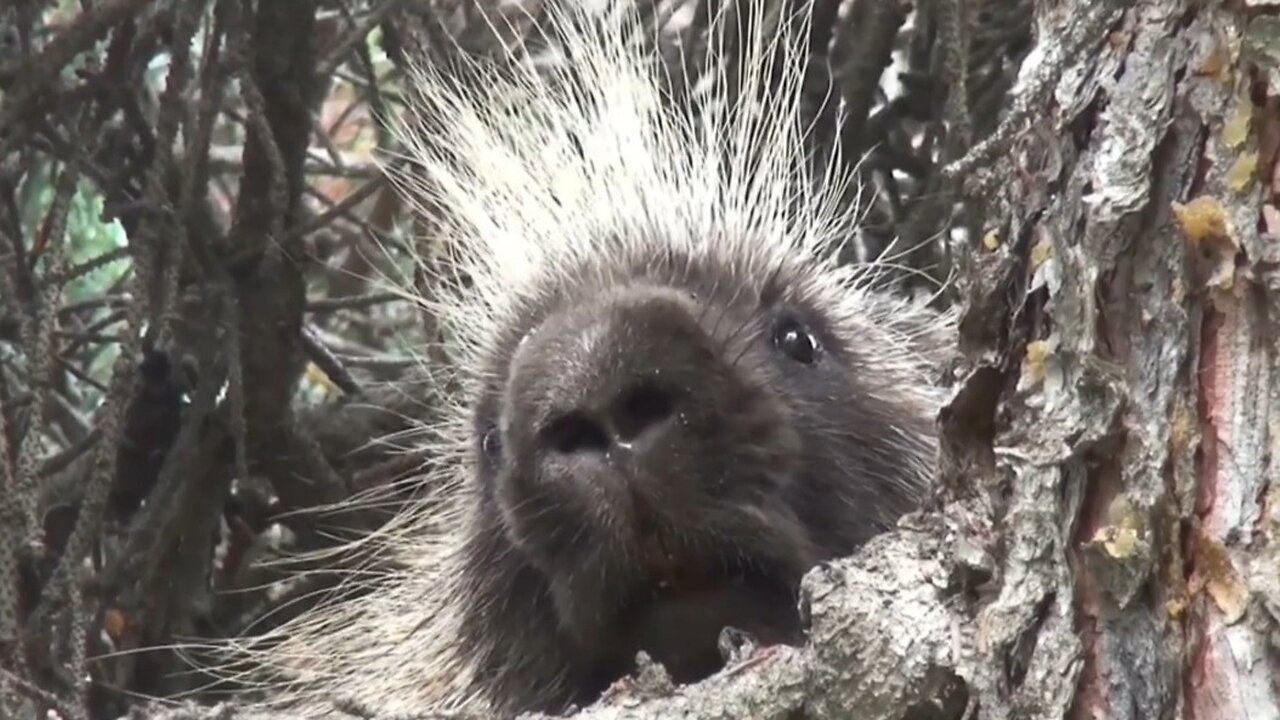Premium Only Content

"The Prickly World of Porcupines: Masters of Defense"
Porcupines are fascinating rodents known for their distinctive quills, which serve as their primary defense mechanism against predators. There are two main types of porcupines: Old World porcupines (family Hystricidae) found in Africa, Europe, and Asia, and New World porcupines (family Erethizontidae) found in North and South America. While they share some similarities, these two groups have different habits and physical characteristics. ### **Physical Characteristics:** - **Quills**: The most notable feature of porcupines is their quills. These are modified hairs coated with thick plates of keratin (the same substance human hair and nails are made of). Quills are sharp and can easily detach when the porcupine is threatened. Contrary to popular belief, porcupines cannot "shoot" their quills, but the quills can embed into the skin of a predator, causing pain and potentially deterring further attacks. - **Size and Weight**: Porcupines vary in size depending on the species. They can range from 2 to 3 feet (60 to 90 cm) in length, not including the tail, and weigh between 12 to 35 pounds (5.5 to 16 kg). Old World porcupines tend to be larger than their New World counterparts. - **Coloration**: Porcupines are generally dark brown, black, or gray with lighter quills. Some species may have white or yellow quill tips, which are particularly visible in contrast to their darker fur. ### **Behavior and Diet:** - **Diet**: Porcupines are primarily herbivores. Their diet consists of leaves, herbs, twigs, bark, and green plants. In the winter, they rely heavily on tree bark and conifer needles. New World porcupines are also known to climb trees to feed, while Old World porcupines are more terrestrial. - **Nocturnal Habits**: Porcupines are mostly nocturnal, meaning they are active at night. During the day, they seek shelter in dens, hollow logs, or trees. New World porcupines are excellent climbers and may sleep in trees, while Old World species prefer burrows or rock crevices. - **Defense Mechanism**: When threatened, a porcupine will first try to flee. If cornered, it will raise its quills, rattle them, and face its rear toward the threat, ready to lash out with its tail. The quills can easily embed in the skin of a predator, causing irritation and injury. ### **Habitat and Distribution:** - **Old World Porcupines**: Found in Africa, Europe, and Asia, these porcupines inhabit a variety of environments, including forests, grasslands, and rocky terrains. They are ground-dwellers and do not climb trees as frequently as their New World relatives. - **New World Porcupines**: Found in North and South America, these porcupines are often associated with forested areas, though they can also be found in grasslands and deserts. They are more arboreal (tree-dwelling) than Old World porcupines and are known to climb trees to find food and escape predators. ### **Reproduction:** - **Breeding**: Porcupines typically breed once a year. The gestation period varies between species but is generally around 7 months for Old World species and about 200 days for New World species. - **Offspring**: Porcupines usually give birth to one or two young, called porcupettes. The young are born with soft quills, which harden within a few hours after birth. Porcupettes are well-developed and can start foraging with their mother within a few days. ### **Lifespan:** Porcupines can live up to 15 years in the wild, though some may live longer in captivity. ### **Conservation Status:** Most porcupine species are not currently endangered, though some local populations may be at risk due to habitat loss and hunting. Porcupines are sometimes hunted for their meat and quills, which are used in traditional crafts and ornamentation. ### **Cultural Significance:** In some cultures, porcupine quills are used in art, especially in Native American traditions, where they are dyed and woven into intricate patterns on clothing and baskets. Porcupines are also symbols of defense and protection due to their unique ability to deter predators. Porcupines are remarkable creatures, known for their unique defense strategy and adaptability to various environments. Their role in ecosystems as herbivores helps maintain the balance in forested and grassland areas.
-
 21:57
21:57
GritsGG
1 day agoBO7 Warzone Patch Notes! My Thoughts! (Most Wins in 13,000+)
28.6K -
 LIVE
LIVE
Lofi Girl
2 years agoSynthwave Radio 🌌 - beats to chill/game to
1,465 watching -
 7:51
7:51
Comedy Dynamics
6 days agoLife on Lake Erie - Bill Squire stand-up comedy
58.2K1 -
 5:08:20
5:08:20
FreshandFit
12 hours agoArt Basel IRL Stream
202K13 -
 LIVE
LIVE
Akademiks
3 hours ago50 cent Declares War on Diddy. Drake #1 streamed artist of 2025. Candace vs TPUSA. YB 19 bodies?
1,210 watching -
 4:51:31
4:51:31
Drew Hernandez
1 day agoKASH DENIES FOREIGN INVOLVEMENT IN CHARLIE KIRK MURDER & CANDACE WILLING TO MEET WITH ERIKA KIRK?
31.8K20 -
 1:19:49
1:19:49
Adam Does Movies
5 hours ago $20.08 earnedLive Taping! Reviewing Five Nights At Freddy's 2, Marty Supreme, Fackham Hall - Live!
31.9K -
 0:43
0:43
Gaming on Rumble
4 hours ago $2.67 earnedLvl UP (Raids)
23.8K -
 7:50:40
7:50:40
SpartakusLIVE
9 hours agoBUYBACKS Have RETURNED || #1 Gamer w/ Most HEALTHY and VIBRANT Hairline
31.8K -
 2:13:41
2:13:41
TimcastIRL
7 hours agoCNN SLAMMED For Claiming BLACK J6 Bomb Suspect IS A WHITE MAN w/ Milo & George Santos | Timcast IRL
243K366